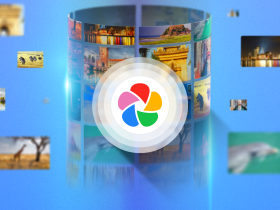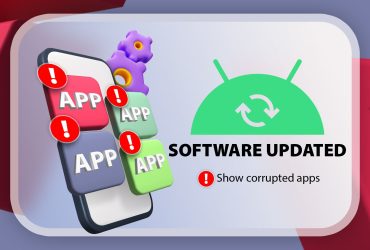I Ranked Phone Makers By Software Support And The Results Were Surprising

Contents
As enthusiasts, we love to keep up on every new Android release, but we understand that you don’t need to upgrade your phone every year. In fact, we encourage holding on to your current phone for as long as possible. Picking up a new phone every year is not only unnecessary to stay up to date on the latest Android developments, but it creates a colossal amount of e-waste. However, at some point, your phone will start to struggle, and you’ll need to replace it.
If you’re considering longevity as the most important feature of a new Android phone, there are clear winners among phone makers in the US. Recently, we’ve seen some companies drastically increase the software and security update timeline for their devices, further widening the gulf between the best and worst phone makers for software support. So here are the best phone makers ranked by software support in the US.

Related
How many Android OS updates will my smartphone get?
Know how long your phone is supported before you buy
Consistent support timeline across all new devices

The launch of the Pixel 8 in 2023 marked the start of a positive trend for Android manufacturers. Google promised that the Pixel 8 family would receive seven years of software support, which it then repeated for the Pixel 9. That means all Pixel 8 devices will receive their last software and security update in 2030, a significant improvement in software support over previous Pixel phones.
While Samsung also offers seven years of software support on its devices (more on this later), Google wins out as you don’t have to compromise on software support if you settle for a midrange Pixel A-series device. Every single Pixel phone since the Pixel 8 offers seven years of software and security updates. So if you decide a flagship Pixel isn’t for you and want to downgrade, you won’t have to sacrifice software support.
Samsung
Great software support for its flagship phones

After Google announced seven years of software and security updates for the Pixel 8, Samsung followed suit by copying the promise for the Galaxy S24 series. Every Galaxy S-series and Z-series phone since the Galaxy S24 has seven years of software support, and in the case of the Galaxy S25 Enterprise Edition, you’ll get eight years of OS updates. However, this is a niche device, so we won’t count it for this ranking.
Samsung doesn’t take top spot in the software support rankings for another reason. While the S and Z-series will receive a consistent seven years of software support across all devices, things aren’t as rosy for its A-series. For example, the Samsung Galaxy A25 5G, an otherwise brilliant value budget phone, will only receive four years of software updates and five years of security updates.
Apple
Inconsistent, but decent software support

It might surprise you to know that it wasn’t until 2024 that Apple officially stated how long its iPhone software support period lasts. Thanks to legislation in the UK, Apple confirmed that it would offer a minimum of five years of software updates for its devices. This puts it firmly in the middle when it comes to software support rankings, but this isn’t the whole story.
Just because Apple has pledged to a minimum of five years of software support, it doesn’t mean the phone maker can support its devices for longer. Indeed, this has long been the case. The iPhone XR and XS, launched in 2018, are compatible with iOS 18, marking seven years of software support for the phones.
However, there’s no way of knowing exactly how long your iPhone will last beyond five years. This is a respectable length of time for an iPhone, but Apple needs to promise consistently longer software support to beat its competitors.
OnePlus
Average, but consistent

OnePlus offers four years of OS updates and six years of security patches for the OnePlus 13. While Samsung and Google dramatically increased their phones’ software support, OnePlus stuck to four years. Admittedly, it did increase the length of security patches by a year from the OnePlus 12, but it’s still a noticeable difference between the phone makers.
You shouldn’t hold your breath for longer software support on future OnePlus phones. OnePlus president and COO, Kinder Liu, stated that four years of OS updates is plenty, as your phone will be terrible to use after a couple more years. Of course, this is mostly nonsense. AP’s Stephen Radochia used a seven-year-old Pixel 2 XL in 2025 and had a mostly positive experience.
That being said, four years of OS updates is still a reasonable length of time. The worldwide average replacement cycle length in 2023 was 3.6 years, so OnePlus nails the sweet spot for what the average user would expect. Nevertheless, if you want longevity, it’s not the best choice.
Motorola
Short and late software support

Motorola has made some stellar phones in recent years, but its software support promises leave much to be desired. Even its flagship phones, like the Motorola Razr (2025), only offer three years of OS upgrades and 4 years of security patches. This would feel low even if Google hadn’t raised the bar for software support.
Software support for Motorola’s cheaper phones is even worse. The Moto G (2025) only comes with two years of OS updates. Admittedly, this is a $200 phone, but it’s still remarkably low. But even for Motorola’s flagship phones, things aren’t as simple as they seem.
Not only is Motorola’s software support noticeably short, but it’s usually late. Motorola took eight months to release Android 14 on the Moto Razr+ (2024), and there have been cases of updates that took a year to arrive. So if you settle for a Motorola phone, expect a lackluster number of updates that regularly arrive late.
Asus
Insultingly brief support for its flagship phones

Asus isn’t a significant phone maker compared to Google and Samsung, but it makes powerful gaming phones and effective midrange phones in the form of the ROG and Zenfone series, respectively. However, it’s software support is abysmal.
Asus only offers two years of OS upgrades and five years of security updates for its devices. For a company that’s investing heavily in AI features, this is impressively bad. What’s worse is that its latest ROG phone, the ROG Phone 9 Pro, costs $1200. Asus refusing to support its phones for more than two years is insulting when Samsung offers better hardware with triple the software support for the same price
Pick a phone that offers the right balance of software support and hardware
Kinder Liu wasn’t talking nonsense when he claimed your phone would be borderline unusable after seven years. While we showed that some old phones are perfectly usable after seven years, these were flagship devices on launch. There’s a reason Samsung doesn’t offer long software support for its budget devices: they just aren’t equipped to handle it. But it’s flagship phones are a different story.
Samsung’s flagship phones offer top-of-the-range performance, so they’ll be able to perform well up to the end of their lifespan. Google’s Pixel phones aren’t as focused on performance, but as we’ve seen, they can still last up to the advertised seven-year lifespan. But if you don’t want to keep replacing your phone, stay away from Motorola and Asus.

Related
What’s your reaction?
Love0
Sad0
Happy0
Sleepy0
Angry0
Dead0
Wink0











Leave a Reply
View Comments